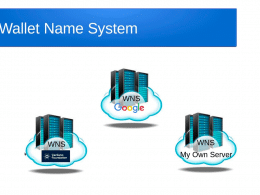
Cardano divides its evolution into Eras, which do not have a specific execution time, and their developments can also overlap. BYRON the Foundation, SHELLEY the Decentralization, GOGUEN the Smart Contracts, BASHO the Scaling, and VOLTAIRE the Governance Era. Byron is the only Era that we can consider finished.
After the last Hard Fork called Vasil, corresponding to the Basho Era, it is time for Voltaire, decentralized governance. I leave an article at the end about Vasil (1).
This article briefly describes CIP-1694 (Cardano Improvement Proposal), which aims to provide a technically achievable first step in the short term, in which the IOHK team proposes a revision of Cardano’s on-chain governance system.
Development is led by Jared Corduan. He is a mathematician with interests in logic and computer science. He holds a PhD in mathematical logic from Dartmouth College, where he has studied reverse mathematics, computability theory, infinitary combinatorics, and forcing. He is fascinated by the incompleteness phenomenon. Jared worked as an industrial programmer since 2011, both in finance and in healthcare technology, before joining IOHK in 2018. He is most excited when he gets to work on projects that combine his love of mathematics and programming.
The Current and New Design
The current design was created with the intention of providing a simple and transitional approach to governance. This proposal aims to decentralize government and address a number of shortcomings of that design.
The existing governance mechanism, which was introduced in the Shelley Era ledger, is capable of modifying protocol parameter values, including initiating Hard Forks, and transferring ADA from reserves and treasury.
In the current scheme, governance actions are initiated by special transactions that require governance key authorizations. For said authorization, the signature of 5 of the 7 existing keys of the main Cardano network is necessary, which are distributed in the possession of IOHK, the Cardano Foundation and Emurgo.
The current system does not allow space for the active participation in the chain of ADA holders. While changes to the protocol are typically the result of discussions with selected community stakeholders, the process is primarily driven by the founding entities.
Treasury movements can be difficult to track and are a sensitive subject. It is important to have more transparency and more audit layers on these movements.
This development will replace the specialized government support for updates of protocol parameters and MIR certificates, which is currently used. Two new fields will be added to the normal transaction parameters, governance actions, and votes. Later I will expand these new concepts.
Project Catalyst is currently one of the main drivers of Cardano treasury withdrawals. Each Catalyst round is typically followed by thousands of MIR requests to award funds to selected projects. However, under this new governance framework, only one cash withdrawal will be allowed per epoch, and thus this limits the number of projects that can be funded in a single epoch. This can be fixed by splitting funds across multiple epochs, transferring funds to a temporary holding pot, or restricting the number of projects that are funded in each round. At the end I leave an article about Catalyst (2).
Any Cardano user will be able to submit a governance action. There will be three distinct groups, which will be responsible for ratifying these governance actions using their on-chain votes, following a well-defined set of rules, which will be based on ADA tenures:
- a Constitutional Committee,
- a group of delegation representatives (DReps) , and
- Stakepool Operators (SPOs)
Any ADA holder can register to be a DRep to vote for himself and his delegates, or instead delegate voting rights to any other DRep.
The design of the DReps is still subject to change and should not be conflated with Project Catalyst DReps.
The Cardano Constitution
The Constitution is a text document that defines the shared values and guiding principles of Cardano.
At this stage, an informative document will be produced, off-chain whose hash digest value will be recorded on-chain, which unambiguously captures Cardano’s core values. At a later stage, the Constitution will try to evolve towards a set of rules based on smart contracts that drive the entire governance framework.
There will be a Constitutional Committee representing a set of individuals or entities that will be responsible for overseeing governance actions, and ensuring that the Constitution is respected.
The Constitutional Committee is considered to be in one of the following two states at all times:
- a normal state (ie one of confidence), or
- a state of no-confidence
In a state of no-confidence the current Committee can no longer participate in governance actions, and must be replaced before governance actions can be enacted. In this state any pending governance actions are canceled immediately.
The Constitutional Committee will use a hot and cold key setup. Hot keys will re-use the existing “genesis delegation certificate” mechanism that has been in place since the start of the Shelley Era.
The initial Constitutional Committee will constitute the core members of a membership-based organization that has yet to be defined, however it will most likely include some members of the founding entities, such as Input Output Global and the Cardano Foundation, as well as key community players who are interested in participating.
The Constitutional Committee can be replaced in two different ways:
- In a normal state the Committee can be replaced through a specific governance action, which requires the joint approval of the current Constitutional Committee and the DReps.
- In a state of no-confidence the Committee can also be replaced through a specific governance action, with the approval of the SPO and DRep members.
The size of the Constitutional Committee is not fixed. It can be changed each time a new Committee is installed. Similarly, the quorum (the number of voters required to enact governance actions) is not fixed and can change each time a new Committee is installed.
A motion of no confidence is an extreme measure that allows ADA holders to revoke the power that has been given to the current Constitutional Committee. All pending governance actions, including those ratified by the Committee, will be withdrawn if the motion is approved.
Governance Actions and Votes
A governance action is an on-chain event that is executed by a transaction and has a deadline to be enacted. Six different types of governance actions are defined, as detailed below:
An action is said to be ratified when it gathers enough votes in its favour. An action that does not collect enough positive votes before its deadline expires.
So, an action that has been ratified is enacted once it has been activated on the network.
Regardless of whether they have been ratified, the shares can be withdrawn, if, for example, a no-confidence motion is enacted.
Any ADA holder can file an on-chain government action. To do this, they must provide a Lovelaces deposit, which will be returned when the action is complete (either ratified, abandoned or expired).
Government actions are ratified through on-chain voting actions. Different types of governance actions have different endorsement requirements, as shown in this table:
—Governance Action Type: The type of governance action. Note that the three possible treasury actions involve Lovelace amounts , , , and .
—Constitutional Committee: A value of ✔️ indicates that Quorum-Many Constitutional Committee ‘yes’ votes are required. A value of ❌ means that Constitutional Committee votes do not apply.
—DReps: The DRep vote threshold that must be met as a percentage of active voting stake, ranging from 0 to 100 (inclusive).
—AVST: The Active Voting Stake Threshold. The percentage to be used to determine if there is a sufficient active voting stake. SPO vote endorsement is not required for the specific governance action if there is a sufficient active voting stake. Otherwise, SPO vote endorsement is required. The ❌ symbol indicates that the AVST will be ignored, and only the DRep and SPO votes will be considered regardless of the AVST.
—SPOs: The SPO vote threshold which must be met as a percentage of the stake held by all stake pools. The SPO vote is only considered if the AVST threshold is ❌ or the AVST is below the AVST threshold.
Governance actions are checked for ratification only in a time limit, thus allowing everyone to vote on each proposal and show that they are active.
Once ratified, actions will be organized for its promulgation. Actions that have been arranged will be enacted at the next epoch limit, unless they are discarded.
Therefore, all submitted governance actions can be ratified or dropped, as a result of some higher priority action, or expired after several epochs.
Deposits are returned immediately when a ratified action is enacted, or the action expires, or a ratified action is dropped.
During enactment, actions are prioritized as follows:
- Motion of No Confidence
- New Constitutional Committee or a change in quorum size
- Updates to the Constitution
- Initiation of Hard Fork
- Changes to protocol parameters
- Treasury Withdrawals
Maximum can be enacted one action of each type at any time.
A successful “Motion of No Confidence” action, or the election of a new Constitutional Committee, or a constitutional change invalidates all other unenacted governance actions, causing them to be immediately dropped without enactment.
Deposits for withdrawn shares will be returned immediately.
Each governance action will include a deposit amount, a blockchain address to receive the refunded deposit, a URL for any metadata that is needed to justify the action, and a hash of the content of this metadata URL.
Each accepted governance action will be assigned a unique identifier, the Governance Action ID, consisting of the transaction ID that created it and the index within the transaction body that points to it.
Votes can be cast multiple times for each government action using a single key hash, but correctly submitted votes override previous votes for the same hash and key role. As soon as a governance action is ratified, voting ends.
Votes from DReps and SPOs may become meaningless after crossing an epoch boundary, as they may go unrecorded. Therefore, all unregistered votes are canceled before new votes are considered.
Governance Status
When a governance action is successfully submitted to the chain, the ledger status will track its progress. In particular, the following will be tracked:
- the identification of the government action
- the time the action expires the
- amount of the deposit
- the address that will receive the deposit when it is returned
- the total yes / no / abstain votes of the Constitutional Committee for this action
- the total of yes / no / abstain votes of the DReps for this action
- the total of yes / no / abstain votes
Initial Implementation
The implementation process will be executed in two stages.
This will also allow time for a more comprehensive assessment of incentives and other important issues, while laying the groundwork for governance in Voltaire.
First stage:
- Add a subset of governance actions to the transaction body, while replacing protocol parameter updates and MIR certificates. The following governance actions will be the initial ones:
- protocol parameters
- hard forks
- withdrawals from the treasury
- Constitutional Committee changes
- Add votes to the body of transactions, but not allow DReps votes
- The first version will only have Constitutional Committee votes, and more votes SPO for Hard Forks Cases
Second Stage:
The remainder of this CIP will be implemented in the second stage.
Several issues remain to be discussed, including:
- off-chain DRep expectations
- bootstrapping the Constitutional Committee
- the initial Constitution
- DRep incentives
- what values in the ratification requirements table should be encoded and what the protocol parameters should be
Some of these issues can be addressed through changes to this document, and others will need to be addressed in new CIPs or discussion papers.
Source: An On-Chain Decentralized Governance Mechanism for Voltaire by Jared Corduan.
. . .









